The bewildering range of India’s ancient textile traditions represents the very best inspirations of the versatility and antiquity of the loom culture of her villages. Between Kashmir in the north to Kanyakumari in the south ... from Jaipur in the west to Kolkata in the east, India’s textile trail is a fabulous, jewel-toned discovery of many delights.
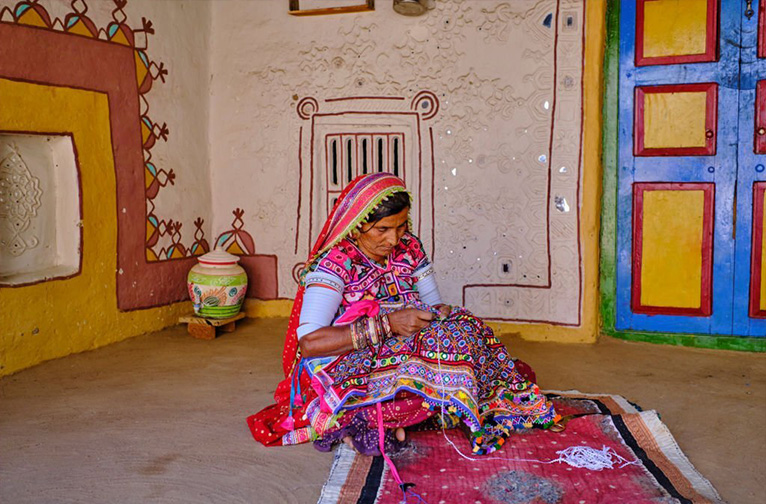
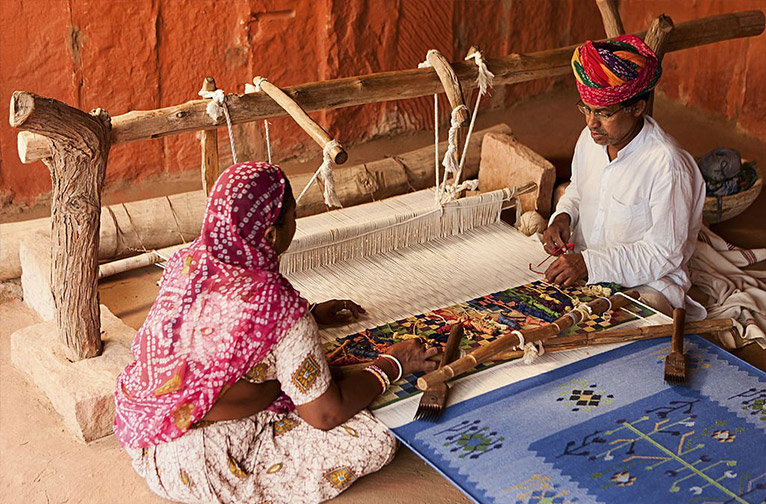
Rajasthan’s hand blocked prints from Bagru and Sanganer villages and the lehariya prints from the villages around Udaipur are remarkable for their unique back-to-nature driven. They still wow the visitors with their freshness and versatility. The fragile delicacy of Lucknow’s chikankari work, promoted by no less than the Nawabs of Awadh, still has us in thrall. The living textile tradition of Ikat, said to have been inspired by the ikat weaves from Indonesia from the early days of India’s maritime ties, is an important component of India’s crafting heritage. From Bhubaneswar in Odisha to Hyderabad in Andhra Pradesh to Madurai in the south, this ancestral hands-on textile tradition has been preserved despite the challenges of new technology. It is a rare thing that an Indian bride would spurn the opportunity to get her hands on Gujarat’s legendary double-ikat patola. The sophistication of the Chanderi and Maheswari saris from Madhya Pradesh can rival the splendor of the Kolkata’s gorgeous tangails and dhakai weaves. If Varanasi offers you exquisite zardozi and zari woven confections can the lavish Kanjeevarams of Chennai be far behind as a must-have for an India wedding trousseau.
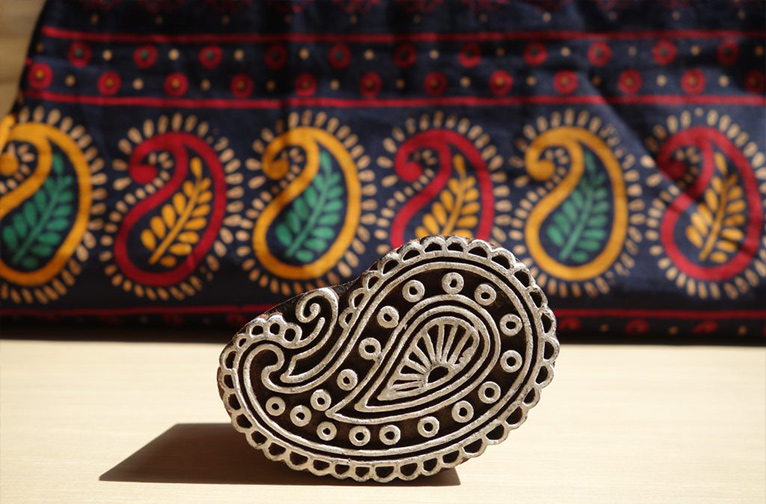
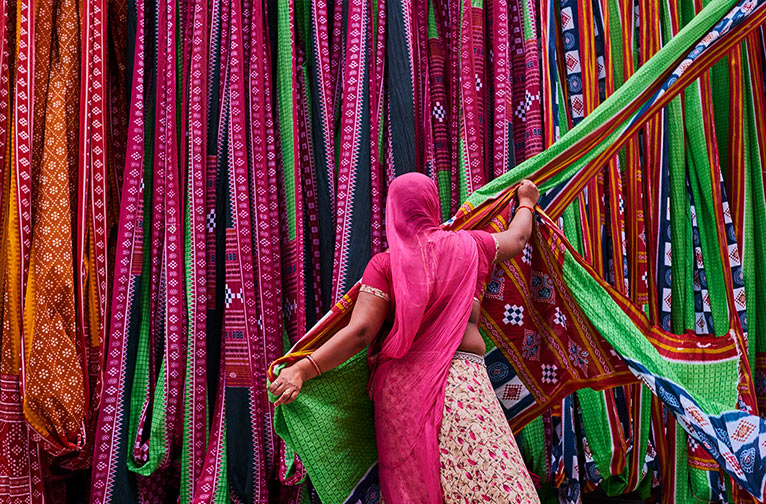
Each labor-intensive creation is driven by the expertise of detailing, high precision and dedicated techniques that have been passed down the generations in India’s villages. Discoveries of India’s glorious textile traditions are captured in its exotic bazaars, its museums, its craft villages and the cupboards in the homes of its citizenry. Zealously guarded these traditions now even find a fresh voice in contemporary fashion runways around the world.
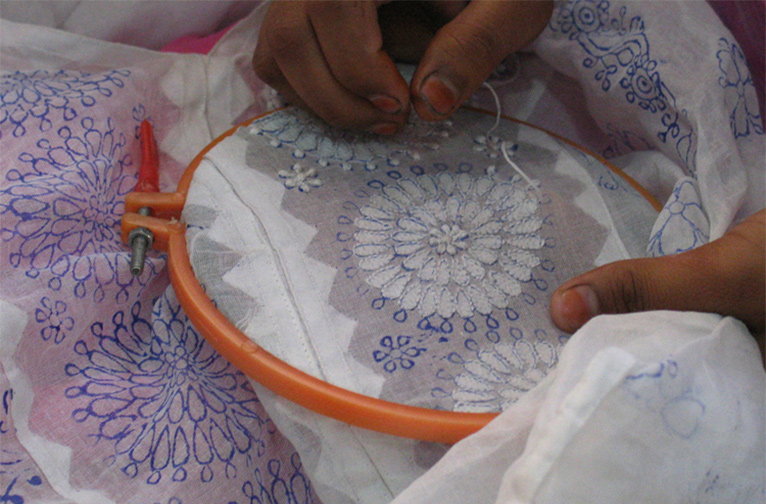
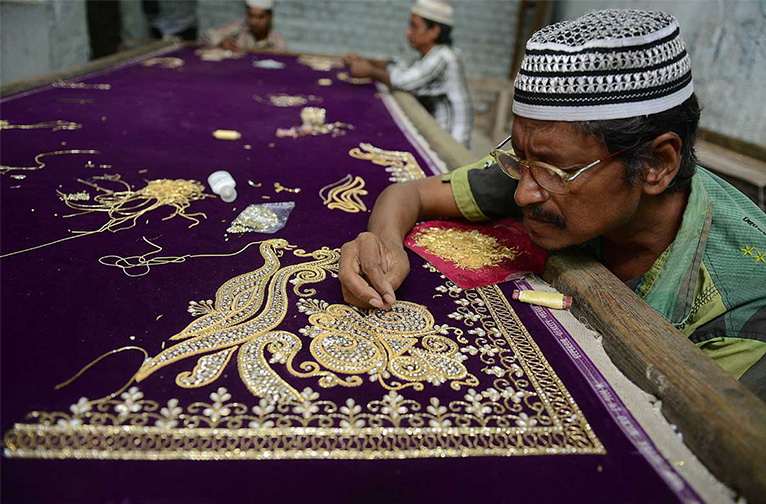
Following India’s textile trail is a truly rewarding cultural experience. Having gorged on the sumptuous street food delights and enjoyed the pan and the bazaar gossip of Lucknow, the city of the Nawabs, abandon yourself to the city’s dazzling traditions of Chikankari and zardozi. The Chowk is Lucknow’s heart. The hole in the wall shops here house silver smiths, zardozi embroiders, chikan karigars, and saree sellers. The exquisite art of Chikankari is Lucknow’s gift to India’s textile and broderie wealth. Empress Noorjehan is said to have introduced it to the Mughal court. Chikan work has 36 types of stitches on white muslins. Pick up kurtas, salwar kameezes and even table linen from the Chowk area, Daliganj shopping area or SEWA, which revived this dying craft. Join Roobaroo Walks on its Old City Heritage Walk tour to discover Lucknow’s amazing textile heritage.
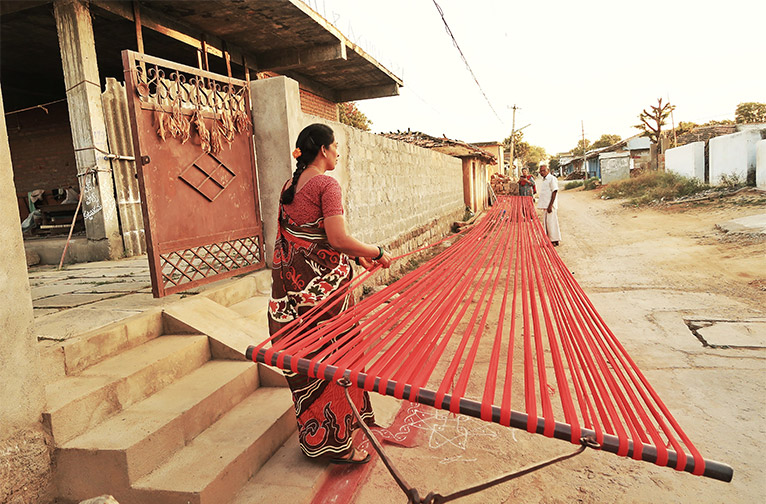
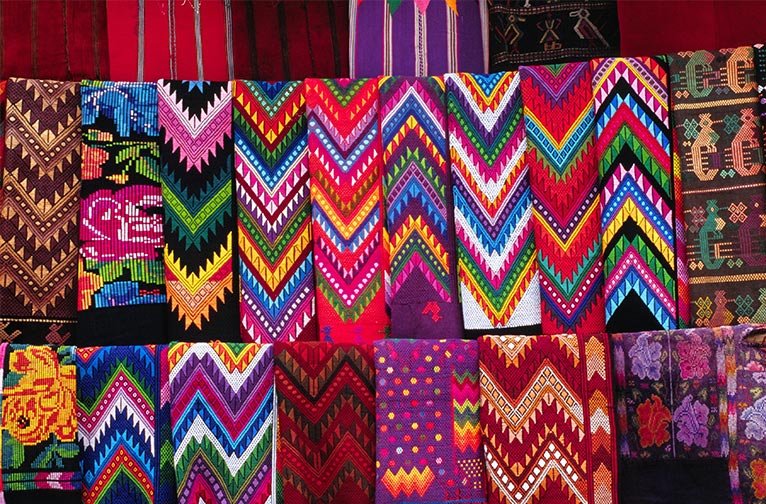
Having sampled the many culinary and cultural delights of Hyderabad with Detours, set off for the nearby villages of Pochampally and Koyyalgudem, famous for their incredibly rich ikat traditions on the Weaver’s Detour While Pochampally is famous for its silk weaving, Koyyalgudem is famous for weaving cotton. It is an excellent opportunity to learn all about the ikat technique from Pochampally’s Padamshali and Devangas community weavers who do ikat weaves and dyes. Almost every house in the village has a loom where the entire family is involved in the process. You can pick up ikat material, sarees, shawls and bed linen from the Pochampalli Weavers Coop retail outlet.
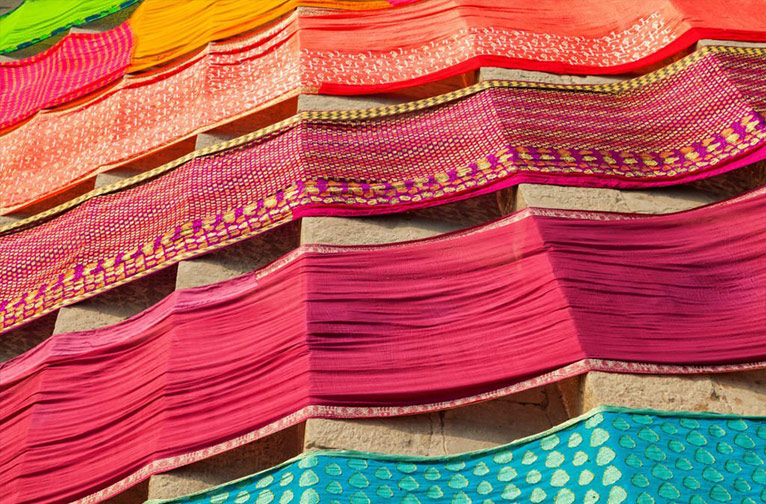
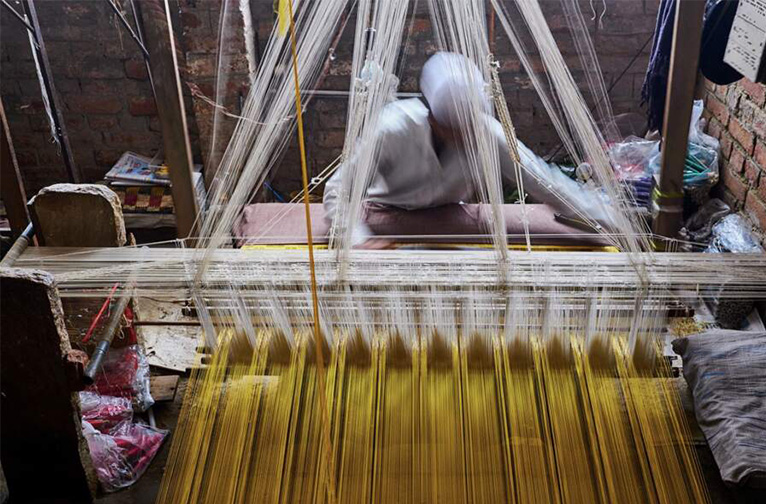
Older than Nineveh and Babylon, Varanasi, the Kashi of yesteryears, rose to become an important signpost on the northern trade route. Weaving traditions date back to the Kashi of Vedic times. Join Varanasi Walks’ curated Banaras Artisans And Weavers Walk to plunge into a treasure trove of gorgeous tanchois, delectable muslins, luxurious brocades and softest of cottons. The tour allows for rewarding interactions with artisans who are custodians of hundreds of years weaving family traditions. Learn all about the beautiful community connect cemented by these ancient crafting traditions. Zardozi involves the art of using metal-coated thread—usually made of thin strands of gold, silver or copper - to make beautiful, intricate designs on cloth. Sequins, beads, pearls, precious and semi-precious stones are used to create elaborate patterns, extremely popular in bridal trousseaus. While exploring the artisans’ workshops, you can buy what you like directly from them. So next time you adorn yourself a Banarasi sari you are enfolded in thousands of years of textile heritage of this venerable city.
This is just a tiny skylight-view into one of India’s greatest crafting skills and cultural heritage. Repeat visits to the country’s bazaars and craft villages will surely reveal new narratives each time to tickle your curiosity.